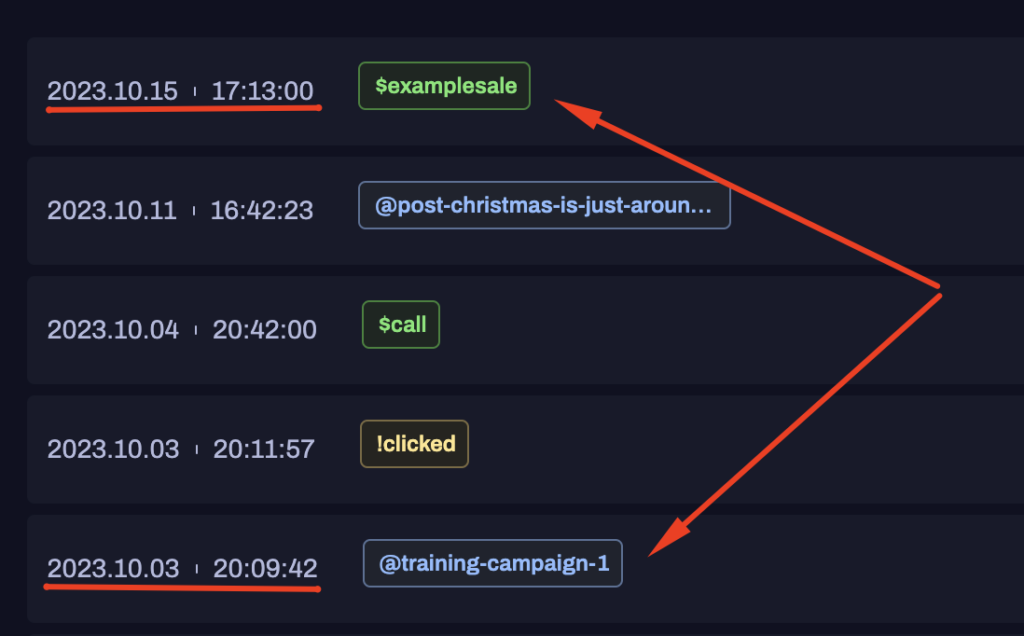Day Range for First Ad Attribution
What does this setting do?
This setting is specific to scientific mode. It is used to calculate the amount of time between the first source / click and the sale or event it is attributing.
To explain this, we’re going to use this example of a lead journey. Pay particular attention to the date of the first source at the bottom (@training-campaign-1) and the final sale at the top ($examplesale), which is the sale event we’re going to focus on:

The difference between both of these is 12 days.
By default, the day range for first ad attribution is set to 30 days. This means if the first click and the event in question is within 30 days of each other, we will attribute the sale to the first click.
12 days is lower than 30 days, so in this case we will attribute $examplesale to the very first click that happened, which is @training-campaign-1.
If you lowered this setting to 10 days, the time period between the first click and the sale would be greater than the day range for first ad attribution, so we wouldn’t attribute it to the first click. Instead we always attribute the sale to the last click, which in this case is @post-christmas-is-just-aroun...
How many days should I set this for?
As a general rule, we suggest having this range set to at least the number of days the average customer journey from first ad click to sale takes.
For example, if the average customer journey from ad to sale takes 6-10 days, then the range for first ad attribution should be set to at least 10 days. If the average customer journey is longer than 30 days then set this range to 30 days.
This way you are only considering the first click as contributing to the sale if the sale occurs within a close enough timeframe to have a considerable impact on the buying journey. If the sale happens after a longer period than the average user journey for your business, it’s far more likely the last click would be the most impactful on the sale or event.